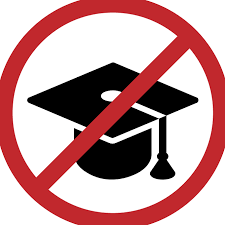Different Types of Journaling and Their Health Benefits

Journaling is a powerful tool for personal growth and self-reflection. In addition to providing a unique outlet for us to express our thoughts and emotions, it can also produce important benefits for our physical and mental health. In this article, we will focus on different types of journaling and how anyone who has or has not taken up journaling can tremendously improve their overall wellbeing.
The first type of journaling is the traditional daily journaling. You are required to set aside a few minutes every day to write about your thoughts, feelings, and experiences. This action helps you create a personal record of your life, thereby activating your memory and enhancing your cognitive and brain functions.
This is the second type of journaling: having the habit of writing about your life for good memory. This is particularly beneficial for individuals who may be having a hard time remembering things, experiencing memory loss, or cognitive decline. Research has demonstrated that writing can enhance memory retrieval and possibly stimulate the growth of new, essential neural connections in human brain.
Another type of journaling that can eventually produce a positive effect in the human brain and improve our mental health is gratitude journaling. This practice entails jotting down things that we are particularly grateful for in each day. As a matter of fact, having a consistent sense of gratitude has been demonstrated by different studies to reduce stress, improve general wellbeing, and increase happiness. It's important to understand that there is no one-size-fits-all method for journaling.
Each individual is special and may experiment with different types of journaling they find most appropriate or comfortable. The goal is to find a journaling method that resonates with you and meets your specific needs and goals. Some of the tips for maintaining a daily journaling habit is to prioritize it, have a journaling companion (your spouse or partner, preferably) and set a rigid journaling schedule—most people do it in the morning or later in the evening before going to bed. By using journaling prompts for overcoming creative blocks, you can streamline your entire journaling practice.
This is how to start a gratitude journal for beginners: make a list of things you are grateful for—good job, family, health, friends, finances, etc. In principle, expressing gratitude every time is one of the best journaling techniques for enjoying some relief from stress.
Journaling for keeping fit has become quite popular nowadays because it gives people the power to journal for their physical wellbeing. Many people take advantage of journaling to track their fitness goals, monitor their progress, and record the outcomes of their workouts.
Documenting one’s physical activities can be helpful in identifying patterns, staying motivated on one’s fitness journey, and setting achievable objectives. Journaling for staying fit can be especially useful for those who are anxious about weight loss. By tracking the kinds of food and drink intakes, feelings about your health journey, and exercise routines, you will be able to make informed decisions about your lifestyle choices or habits.
In principle, journaling can be employed in managing chronic pain or sicknesses. When you document your symptoms, proper treatments, and wellbeing in the process, you can quickly discover the triggers for your illnesses, promptly track medication progress, and discuss more clearly with healthcare professionals treating you. Without doubt, the process of journaling itself can be regarded as a kind of therapeutic self-care. Regular journaling can be seen as deliberate acts of self-love and self-compassion.
Even though traditional pen-and-paper journaling is the most common, but there are some digital journaling apps and platforms that can also be utilized. These tools provide an expressly more comfortable and accessible way to document one’s experiences, feelings, and activities. Some journaling apps come with useful features like prompts, reminders, and the functionality to include photos or drawings in one’s journal. Some of them encourage minimalist journaling ideas and increase focus on important events.
Reflective journaling is another kind of journaling that actively promotes self-scrutiny and personal growth. You can find some journaling ideas for personal growth and reflection from the activities you engage in, that are parts of your daily, monthly, or yearly routine. This requires digging deeper into your emotions and memories, scrutinizing patterns in your behaviors, and having a profound understanding of who you really are. When you are journaling for self-discovery, pay serious attention to things that you do from day to day. One of the important benefits of reflective journaling is that it gives you power to gain insights into your past events and then encourage you to learn from useful lessons from some past actions and decisions. In this way, you will be able to discover certain areas for improvement and transform your life in the process.
It is no longer news that a large percentage of people embrace journaling for mental clarity purposes. The consuming process of writing can help slow down our thoughts and create a sense of clarity and focus. This approach can be quite helpful for individuals who have problems with anxiety or experiencing racing thoughts. You can externalize your emotions by simply writing things on paper, getting a different outlook about life.
Another example of journaling that can tremendously improve your mental health is creative journaling. This requires adding some elements of art, like drawing, coloring, or painting, into your usual journaling practice. Studies have shown that creative expressions such as drawing or painting can drastically improve mood, increase self-awareness, and reduce stress. Some people who often struggle with getting the right words to talk about themselves to others may utilize visual journaling techniques to better express themselves. This requires utilizing collages, photographs, or images to convey thoughts and emotions. Interestingly enough, visual journaling can be used to express and process complex feelings.
If you're entirely new to journaling, you can decide to start with just a few minutes each day. You should not be scared to try your hand on different journaling techniques and approaches. You should always remember that journaling is a personal practice, and there is no single correct approach to do it. Understand that journaling takes time, practice, and consistency. In addition to being a powerful tool for improving our mental and physical health, you can equally embrace journaling for productivity hacks.
Check This Out!
|
| |
|
| |
|
|











